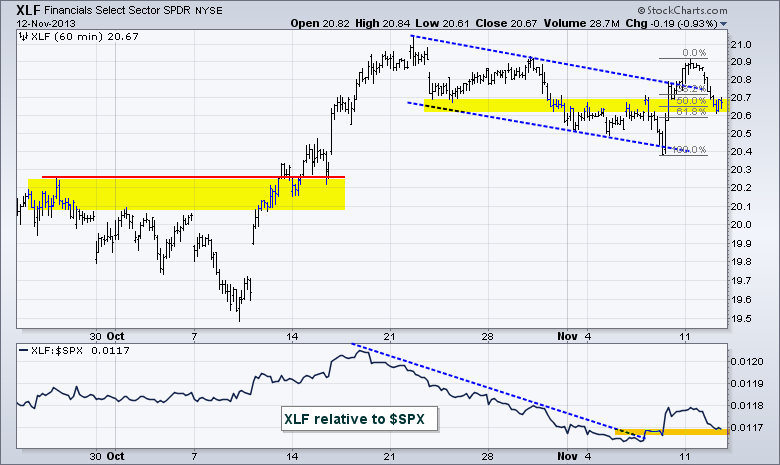It was another mixed day for the major index ETFs. The Nasdaq 100 ETF (QQQ) edged higher, while the S&P 500 ETF (SPY) edged lower. Six of the nine sector SPDRs finished lower with the Finance SPDR (XLF), Energy SPDR (XLE) and Utilities SPDR (XLU) leading the way. XLF moved back below the flag breakout with a .93% decline. On the chart below, XLF firmed at the 20.6 level late Tuesday. Broken resistance and the 62% retracement mark support here. A pullback should hold in this area. A move below this level would negate the breakout and put the short-term downtrend back in play. Elsewhere, the US Oil Fund (USO) broke wedge support and remains weak. The Gold SPDR (GLD) fell sharply to test the mid October low.
**This chart analysis is for educational purposes only, and should not
be construed as a recommendation to buy, sell or sell-short said securities**
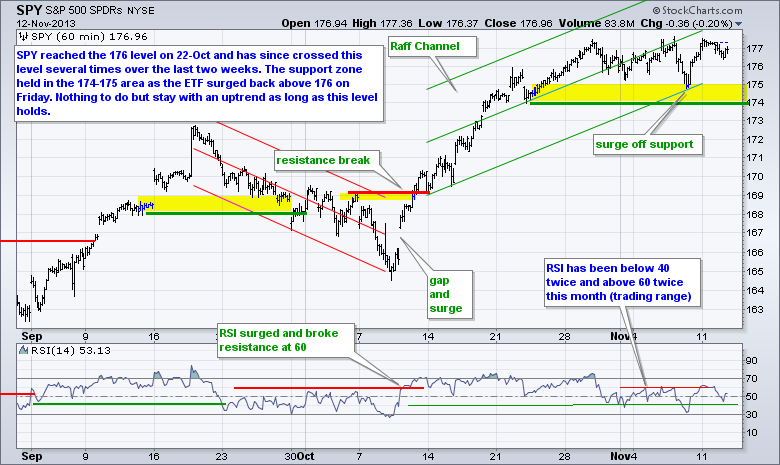
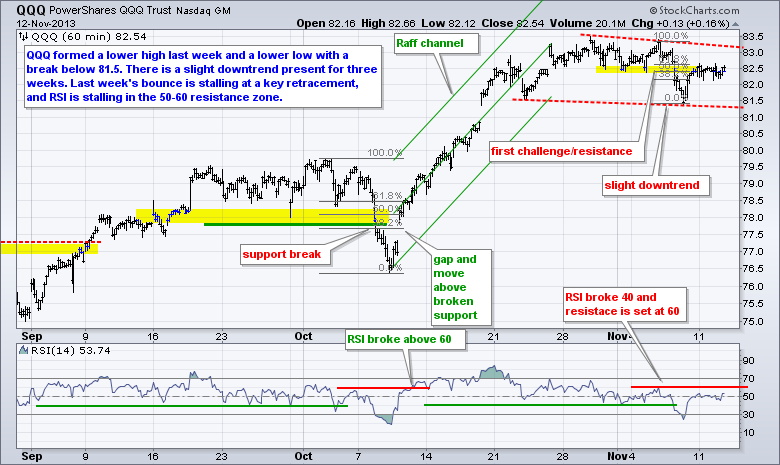

**************************************************************
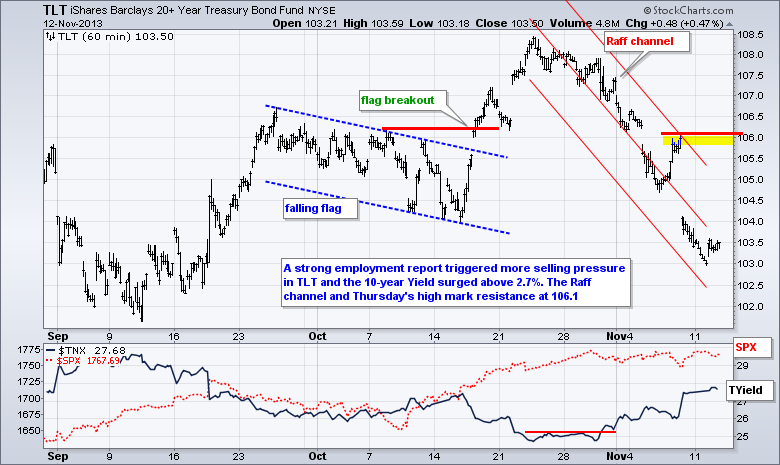
**************************************************************
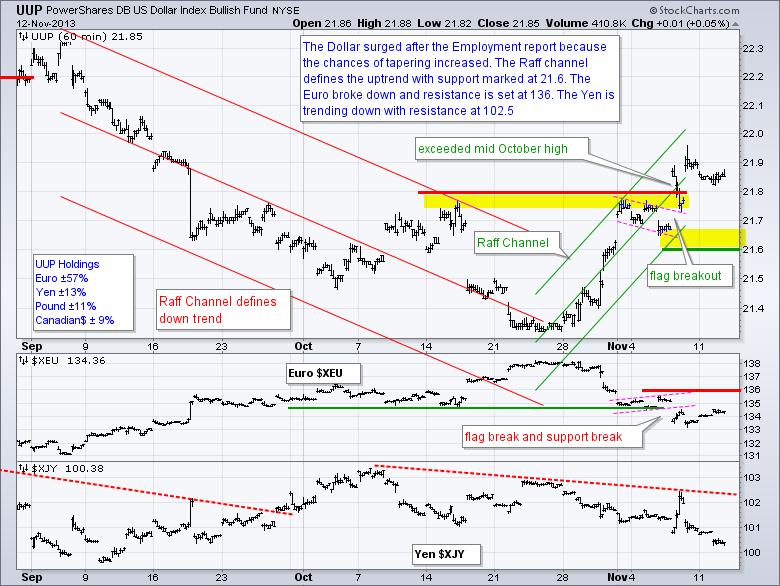
**************************************************************
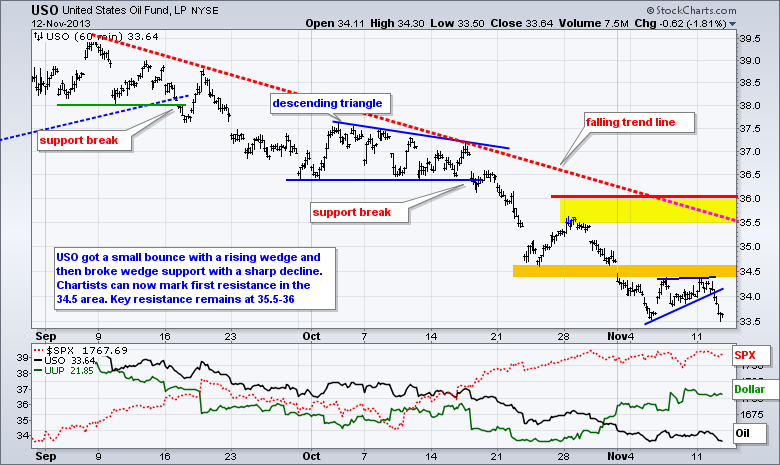
**************************************************************
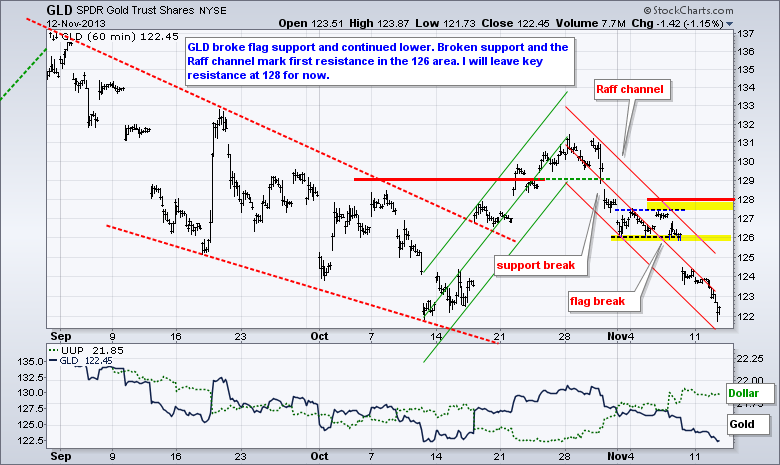
***************************************************************
Key Reports and Events (all times Eastern):
Wed - Nov 13 - 07:00 - MBA Mortgage Index
Wed - Nov 13 - 14:00 - Treasury Budget
Thu - Nov 14 - 08:30 - Initial Claims
Thu - Nov 14 - 08:30 - Trade Balance
Thu - Nov 14 - 10:30 - Natural Gas Inventories
Thu - Nov 14 - 11:00 - Crude Inventories
Fri - Nov 15 - 08:30 - Empire Manufacturing
Fri - Nov 15 - 09:15 - Industrial Production
Fri - Nov 15 - 09:15 - Capacity Utilization
Charts of Interest: Tuesday and Thursday
This commentary and charts-of-interest are designed to stimulate thinking. This analysis is
not a recommendation to buy, sell, hold or sell short any security (stock ETF or otherwise).
We all need to think for ourselves when it comes to trading our own accounts. First, it is
the only way to really learn. Second, we are the only ones responsible for our decisions.
Think of these charts as food for further analysis. Before making a trade, it is important
to have a plan. Plan the trade and trade the plan. Among other things, this includes setting
a trigger level, a target area and a stop-loss level. It is also important to plan for three
possible price movements: advance, decline or sideways. Have a plan for all three scenarios
BEFORE making the trade. Consider possible holding times. And finally, look at overall market
conditions and sector/industry performance.

